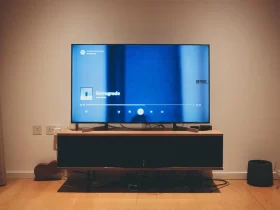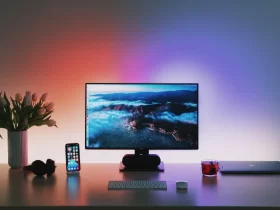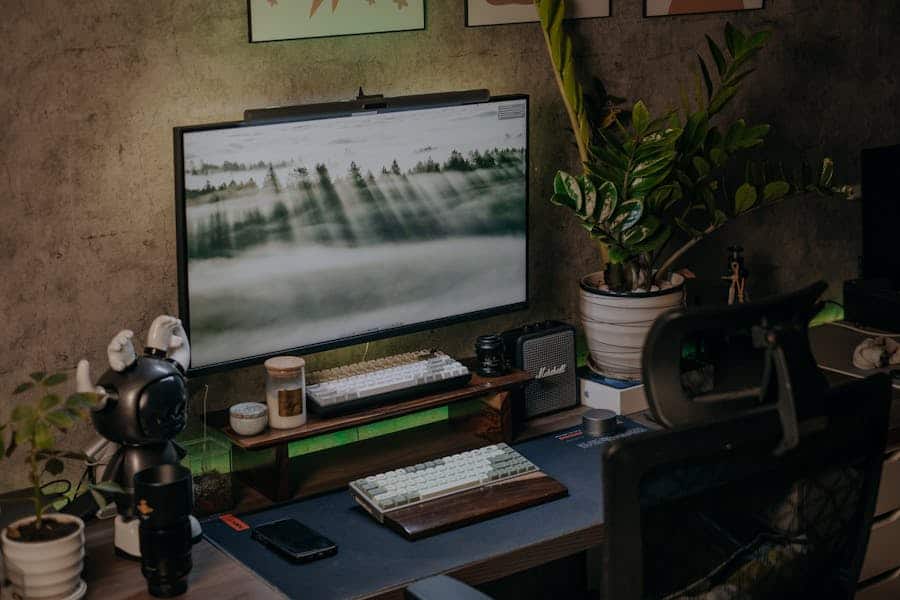In the realm of display technology, resolution stands as a fundamental parameter dictating visual clarity and detail. Two prevalent resolutions, 1080p and 4K, have become synonymous with high-definition viewing experiences. However, a lingering question persists: Can a 1080p monitor adequately showcase 4K content? This article delves into the intricacies of monitor resolution, exploring the technical limitations and potential workarounds in attempting to bridge the gap between these two formats. By unraveling the complexities of resolution compatibility, this piece aims to provide clarity on whether a 1080p monitor can truly render the visual richness of 4K content.
Can A 1080p Monitor Display 4k?
No, a 1080p monitor cannot display 4K content at its native resolution. The resolution of a monitor dictates the number of pixels it can display, with 1080p monitors having a maximum resolution of 1920×1080 pixels, while 4K content typically requires a resolution of 3840×2160 pixels. Attempting to display 4K content on a 1080p monitor results in downscaled and potentially distorted imagery.
Overview Of The Physical Limitations Of A 1080p Monitor
The physical limitations of a 1080p monitor primarily revolve around its resolution and pixel density. At 1920×1080 pixels, a 1080p monitor offers a total of over two million pixels, which determines its ability to display detailed images. While suitable for many applications, this resolution may fall short when rendering highly detailed or large-scale content, such as 4K videos or high-resolution images.
Additionally, the smaller pixel count means that individual pixels are larger and more noticeable, especially when viewed up close. This can result in less sharpness and clarity compared to higher-resolution displays. As a result, intricate details may appear slightly blurred or pixelated, particularly in images with fine textures or small text.
Moreover, the limited pixel count restricts the amount of information that can be displayed on-screen simultaneously. In tasks such as video editing or multitasking, users may find themselves constrained by the available screen real estate, leading to a less efficient workflow.
Overall, while 1080p monitors offer adequate performance for many users and applications, their physical limitations become apparent when tasked with displaying content requiring higher resolutions, such as 4K media or demanding professional tasks.
Potential Workarounds
When faced with the physical limitations of a 1080p monitor in displaying 4K content, several potential workarounds exist, although they come with their own set of trade-offs.
- Hardware Upgrades: One viable solution is to upgrade to a monitor with a higher resolution, such as a 4K display. This entails investing in new hardware that can natively support the desired resolution, providing a sharper and more detailed viewing experience. However, this option may incur additional costs and require compatibility with existing hardware components.
- Software Upscaling: Software upscaling techniques can be employed to simulate higher resolutions on a 1080p monitor. This involves algorithms that interpolate and enhance the visual fidelity of lower-resolution content to fit the screen. While software upscaling can improve the appearance of 4K content on a 1080p display, the resulting image may still lack the clarity and detail of a native 4K display.
- Alternative Viewing Methods: Another workaround involves adjusting the viewing settings or utilizing alternative display modes to optimize the presentation of 4K content on a 1080p monitor. This may include options such as scaling the content to fit the screen, cropping the image to focus on essential elements, or adjusting aspect ratios to minimize distortion. While these methods may improve compatibility, they may also compromise the integrity of the original content.
- Dual Monitor Setup: In some cases, users may opt for a dual monitor setup, combining a 1080p monitor with a separate 4K display. This configuration allows users to leverage the strengths of each monitor for different tasks, such as using the 4K display for high-resolution content creation or viewing, while utilizing the 1080p monitor for supplementary tasks or multitasking. However, this approach requires additional desk space and hardware resources.
Practical Considerations
When considering the practical aspects of utilizing a 1080p monitor to display 4K content, several factors come into play that can affect the overall user experience and effectiveness of the setup.
- Compatibility Issues: One of the foremost practical considerations is the compatibility between the 1080p monitor and the 4K content source. Users must ensure that their hardware, such as graphics cards and media players, supports outputting 4K content to a 1080p monitor without encountering compatibility issues or performance degradation.
- Image Quality: The quality of the displayed 4K content on a 1080p monitor is a critical factor. Users should assess the visual fidelity and clarity of the upscaled or downscaled content to determine whether it meets their expectations and requirements. Factors such as color accuracy, contrast, and sharpness may be impacted by the conversion process.
- User Experience: Practical considerations extend to the overall user experience when interacting with 4K content on a 1080p monitor. Factors such as user interface scaling, text readability, and navigation within applications or media interfaces may be affected by the mismatch in resolutions. Users should evaluate whether the user experience remains intuitive and efficient despite the resolution disparity.
- Productivity And Entertainment: The practical implications of using a 1080p monitor for 4K content extend to productivity and entertainment contexts. For tasks such as content creation, video editing, or graphic design, users may find that the limited screen real estate and resolution hinder their workflow efficiency and precision. Similarly, in entertainment scenarios such as gaming or media consumption, the immersive experience of 4K content may be compromised on a 1080p display.
- Adjustments And Customization: Practical considerations also encompass the ability to make adjustments and customizations to optimize the viewing experience. Users may need to fine-tune display settings, such as aspect ratio adjustments, scaling options, or color profiles, to achieve the desired balance between image quality and compatibility. Additionally, software solutions or third-party tools may offer further customization options to mitigate the limitations of the display setup.
Future Trends
In contemplating future trends regarding the display capabilities of 1080p monitors and their compatibility with 4K content, several key developments and trajectories emerge:
Advancements In Display Technology: Future advancements in display technology are likely to bring about improvements in resolution, pixel density, and overall display quality. As manufacturers continue to push the boundaries of innovation, higher-resolution displays may become more prevalent and affordable, potentially rendering the debate around 4K compatibility with 1080p monitors moot.
Increased Consumer Demand For Higher Resolutions: With the proliferation of 4K content across various media platforms and the growing popularity of high-resolution displays, consumer demand for higher resolutions is expected to rise. This trend may incentivize manufacturers to prioritize the production of 4K monitors over lower-resolution options, further driving the adoption of 4K displays.
Technological Convergence And Compatibility Solutions: Future advancements may lead to the development of more sophisticated technological solutions aimed at bridging the gap between different display resolutions. This could involve the refinement of upscaling algorithms, the implementation of advanced display scaling techniques, or the introduction of hardware-accelerated solutions to optimize compatibility between 4K content and 1080p monitors.
Integration Of Adaptive Display Technologies: The integration of adaptive display technologies, such as variable refresh rate (VRR) and dynamic resolution scaling (DRS), may play a significant role in enhancing the compatibility and performance of 4K content on 1080p monitors. These technologies enable displays to dynamically adjust their resolution and refresh rate based on the content being displayed, potentially improving the visual fidelity and responsiveness of upscaled content.
Emergence Of Next-Generation Display Standards: The development of next-generation display standards, such as HDMI 2.1 and DisplayPort 2.0, may introduce new features and capabilities that facilitate the seamless transmission and rendering of 4K content on 1080p monitors. Enhanced bandwidth, improved compression techniques, and advanced signaling protocols could contribute to better compatibility and performance across a wide range of display configurations.
Conclusion
In conclusion, while the current limitations of 1080p monitors prevent them from natively displaying 4K content, ongoing advancements in display technology and compatibility solutions offer hope for future compatibility. As consumer demand for higher resolutions grows and technological innovations continue to evolve, the distinction between different display resolutions may become less pronounced. Ultimately, the question of whether a 1080p monitor can display 4K content may evolve into a moot point as displays become more versatile and capable of accommodating diverse content formats.
FAQ’s
Can A 1080p Monitor Play 4k Videos?
No, a 1080p monitor cannot play 4K videos at their native resolution. It lacks the necessary pixel density and display capabilities to render 4K content accurately.
Will Connecting A 4k Device To A 1080p Monitor Downgrade The Quality?
Yes, connecting a 4K device to a 1080p monitor will result in the downscaling of the content, leading to a reduction in quality and clarity.
Can Software Upscale 4k Content On A 1080p Monitor?
Yes, software upscaling techniques can enhance the appearance of 4K content on a 1080p monitor, but the resulting image may not match the clarity of native 4K displays.
Is There Any Benefit To Watching 4k Content On A 1080p Monitor?
While 4K content on a 1080p monitor may offer some improvement in visual detail, the overall viewing experience is limited by the monitor’s resolution and may not fully utilize the benefits of 4K content.
Are There Alternatives To Upgrading To A 4k Monitor?
Yes, alternatives include adjusting display settings, using external upscaling devices, or opting for a dual-monitor setup with a separate 4K display for enhanced viewing experiences.














